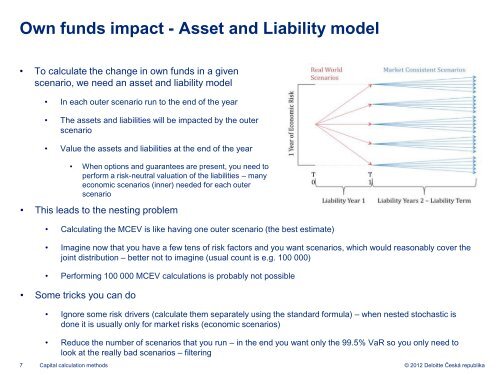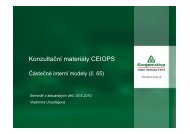Capital calculation methods
Capital calculation methods
Capital calculation methods
Create successful ePaper yourself
Turn your PDF publications into a flip-book with our unique Google optimized e-Paper software.
Own funds impact - Asset and Liability model<br />
• To calculate the change in own funds in a given<br />
scenario, we need an asset and liability model<br />
• In each outer scenario run to the end of the year<br />
• The assets and liabilities will be impacted by the outer<br />
scenario<br />
• Value the assets and liabilities at the end of the year<br />
• When options and guarantees are present, you need to<br />
perform a risk-neutral valuation of the liabilities – many<br />
economic scenarios (inner) needed for each outer<br />
scenario<br />
• This leads to the nesting problem<br />
• Calculating the MCEV is like having one outer scenario (the best estimate)<br />
• Imagine now that you have a few tens of risk factors and you want scenarios, which would reasonably cover the<br />
joint distribution – better not to imagine (usual count is e.g. 100 000)<br />
• Performing 100 000 MCEV <strong>calculation</strong>s is probably not possible<br />
• Some tricks you can do<br />
• Ignore some risk drivers (calculate them separately using the standard formula) – when nested stochastic is<br />
done it is usually only for market risks (economic scenarios)<br />
• Reduce the number of scenarios that you run – in the end you want only the 99.5% VaR so you only need to<br />
look at the really bad scenarios – filtering<br />
7 <strong>Capital</strong> <strong>calculation</strong> <strong>methods</strong><br />
© 2012 Deloitte Česká republika






